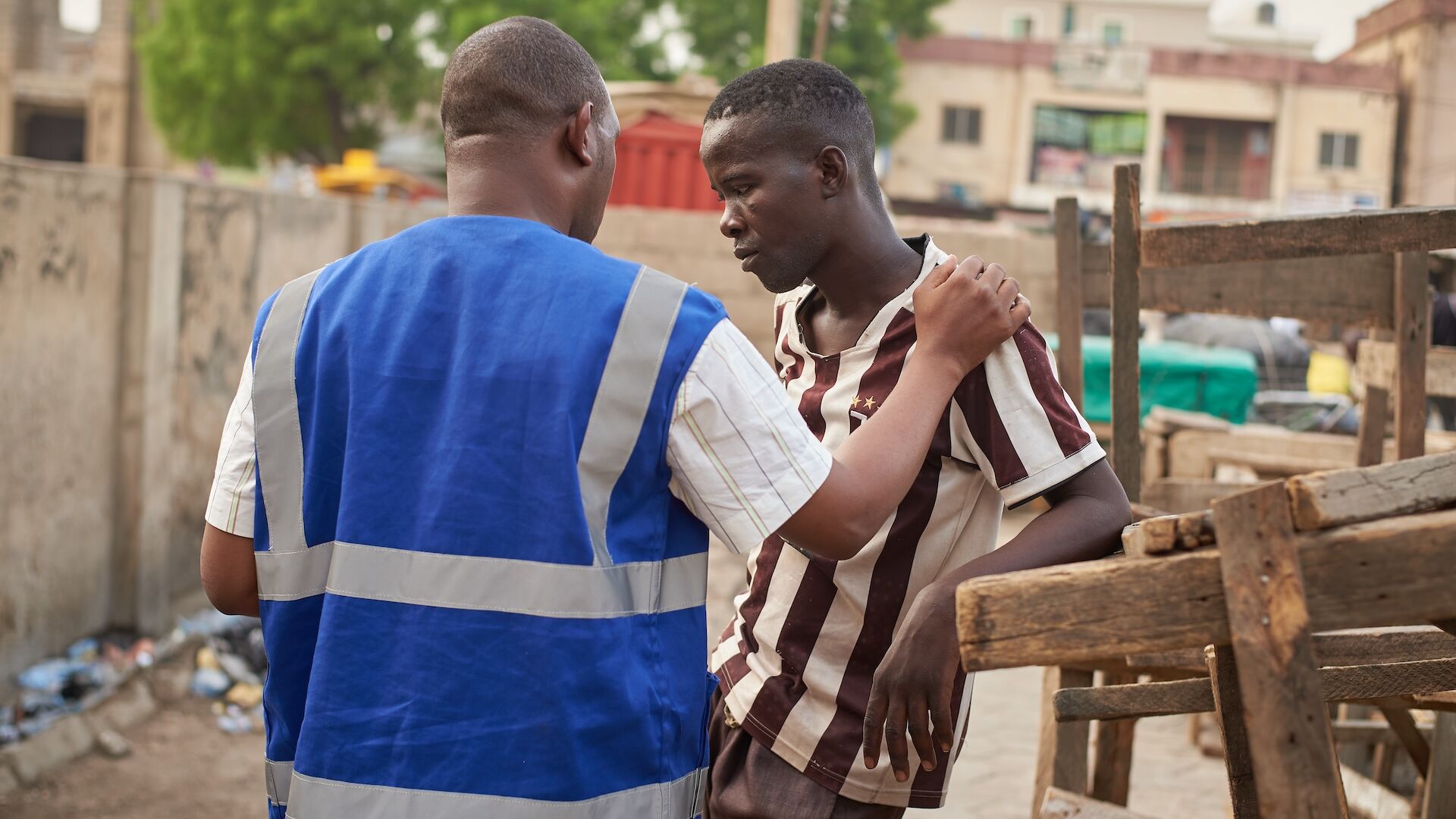Humanitarian Crisis in Gaza: How To Help
Residents of Gaza are facing a widespread humanitarian emergency that has left thousands dead and nearly the entire population displaced. Learn how you can help.
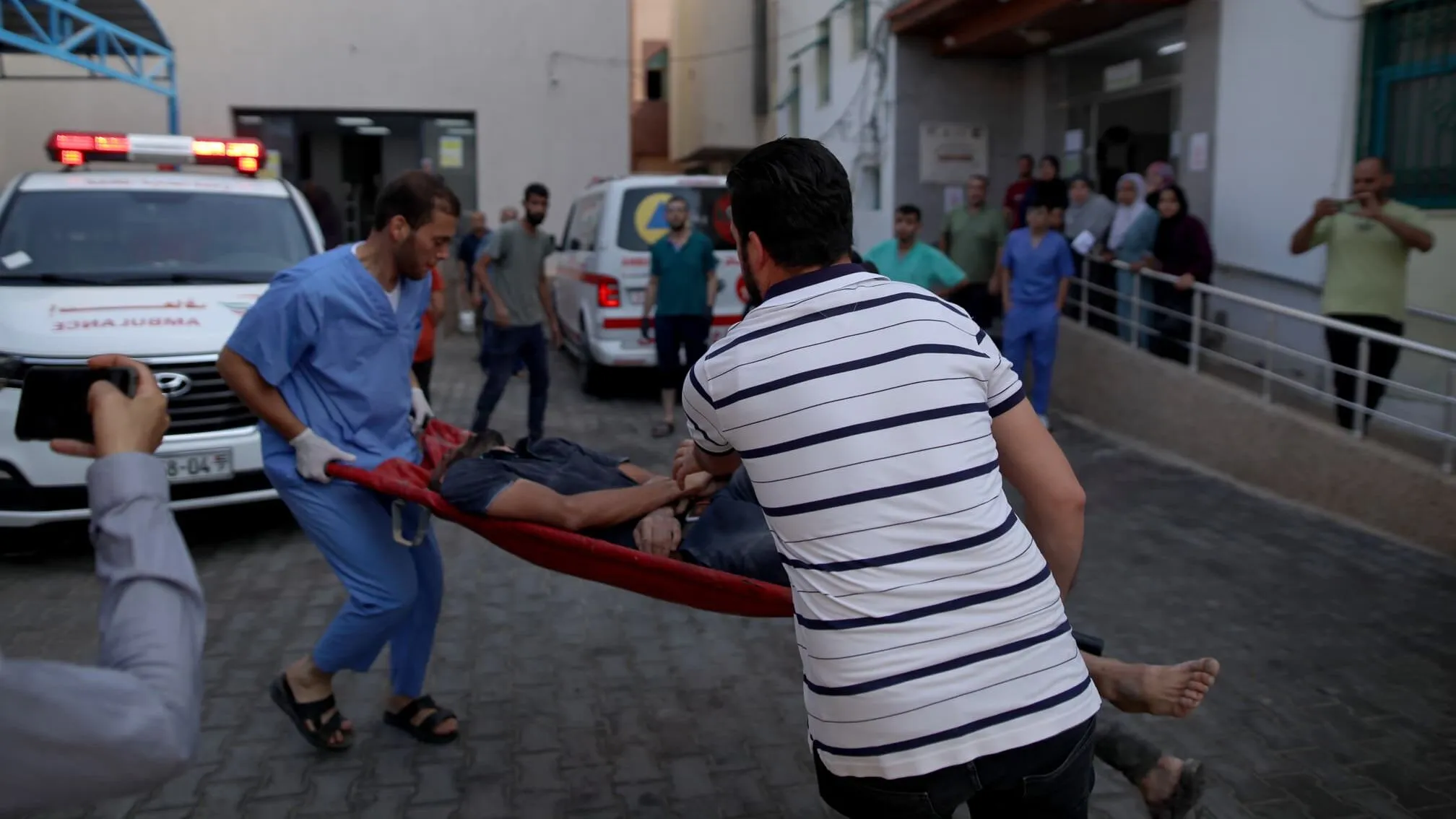
Health systems inside Gaza are at their breaking point after months of violence that has left thousands dead and 85% of the population displaced.
Nearly 2 million people in Gaza have been displaced after Israel declared war on the Hamas militant group in retaliation for the deadly attacks that occurred in Israel on October 7. A severe lack of food, water, medicines, medical supplies, and fuel inside Gaza has led to what the United Nations has described as a “humanitarian tragedy” that has left Gaza’s residents facing a dire emergency.
As of January 2024, Gaza no longer has any fully functional hospitals. The prospect of escalating violence in the south now threatens the lives of more than 1 million innocent civilians who have nowhere else to go.
Project HOPE has delivered more than nine tons of medicines, medical supplies, hygiene kits, and other badly needed items into Gaza. Our team of health workers in Gaza is operating a primary health clinic in Deir Al Balah that has treated thousands of patients, including those with serious injuries or showing signs of malnutrition. Project HOPE has also provided medical care for displaced families in Rafah and is now establishing a primary health clinic there to serve the large numbers of people who are displaced. Read on to learn more about our response and how you can help.
The Latest
URGENT: Humanitarian Catastrophe in Gaza
Your gifts ensure we can respond to the most devastating humanitarian emergencies like this one — while supporting health workers and rebuilding health care infrastructure in the long-term for communities around the world.
What is happening in Gaza?
On October 7, Hamas militants from Gaza fired a deadly barrage of rockets and sent gunmen into Israeli territory, leaving approximately 1,200 people dead and escalating the long-running conflict. In response, Israel declared war on Hamas and launched air strikes into Gaza that have killed thousands of people and displaced nearly the entire population, according to Gaza health officials.
Humanitarian conditions in Gaza have deteriorated to the point where the vast majority of the population can no longer access the food, water, medicine, fuel, and other basic resources they need for daily life. Frequent communications blackouts make it hard to calculate the number of missing persons, death tolls, and injury counts. Gaza’s health system is at its breaking point as hospitals are overwhelmed, supplies are scarce, and many facilities have been damaged or destroyed.
The UN Office for the Coordination of Humanitarian Affairs (OCHA) reports that up to 1.9 million people — over 85% of Gaza’s population — is displaced. Project HOPE’s partner, Anera, has reported that they are using livestock and trolley carts to transport humanitarian goods, though livestock have been targeted. Additionally, cash is unavailable as banks are not working and most money transfer apps are not functional in Gaza. There are limited goods available in markets and the cost of fuel, food, and cooking gas has surged.
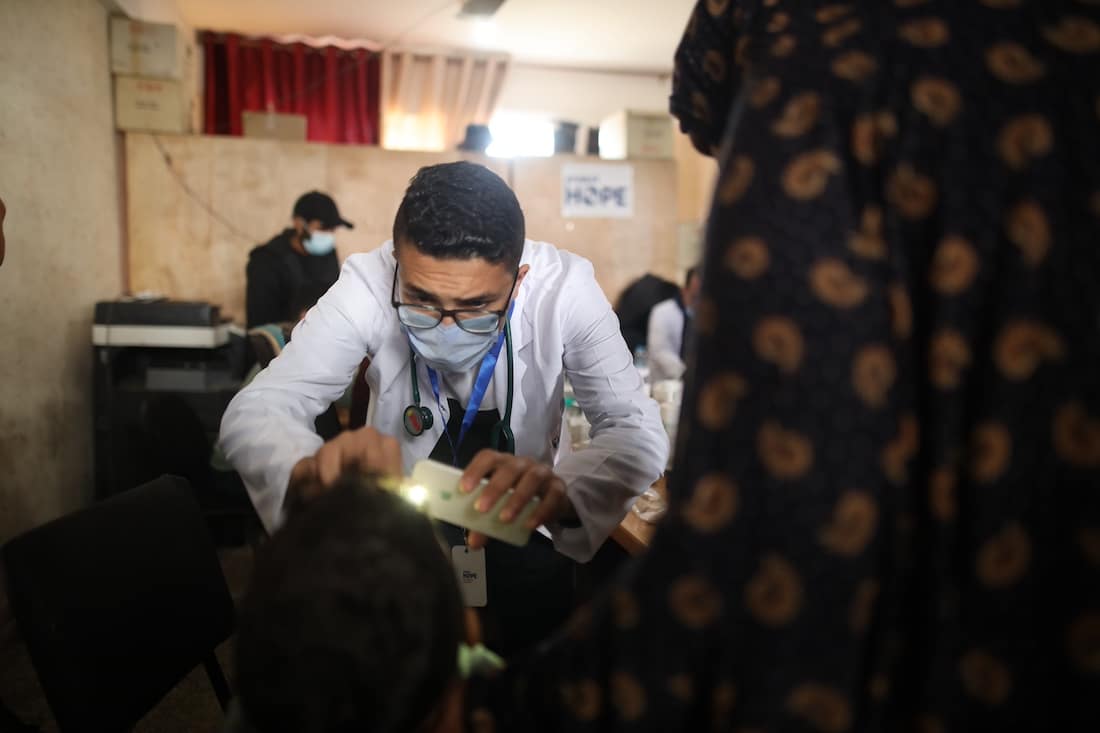
What is Project HOPE doing to help?
Project HOPE has successfully delivered five interagency emergency health kits (IEHKs) and seven trauma and emergency surgery kits (TESKs) into Gaza—more than nine tons of medical relief. Each IEHK contains essential medicines and medical devices that can serve the primary health needs of a population of 10,000 for three months, though we anticipate the supplies to be used quickly due to the immense level of need. Our team has established a supply chain into Gaza that has been able to deliver thousands of family hygiene kits, blankets, and mattresses that were distributed by our local partner, Anera.
Project HOPE’s team of local health care workers is operating a primary health clinic in Deir Al Balah, Gaza, which has treated more than 5,000 patients since it opened in December 2023. The team treats as many as 200 patients a day and is able to prescribe critical medicines that residents have not had access to since the conflict began on October 7. As displaced families continue to arrive in Deir al Balah, Project HOPE has scaled up our operations and increased staffing to support the increased health needs of the community.
Project HOPE has stocked the clinic with medicines and supplies, and our local partner, Anera, has also supported the clinic with repeated donations of medicines and medical supplies. The United Nations Population Fund (UNFPA) has provided additional supplies, including Plumpy’Nut, a Ready-to-Use Therapeutic Food (RUTF) for children impacted by food insecurity.
As violence escalates in Rafah, Project HOPE is providing support to build a medical team to provide medical care to the large numbers of internally displaced people. Project HOPE supported a short-term primary health clinic at a school housing displaced families and is now establishing a primary health clinic in a displacement camp.
Project HOPE is also supporting the urgent mental health needs faced by Gaza’s civilians. In both Gaza and the West Bank, Project HOPE has partnered with Sharek Youth Forum and Hakini Foundation — two local Palestinian organizations — to provide mental health and psychosocial services to women and children. As of January 3, 2024, Sharek Youth Forum had reached more than 3,200 Palestinian women and children through 128 psychosocial group sessions in Rafah and Deir al Balah.
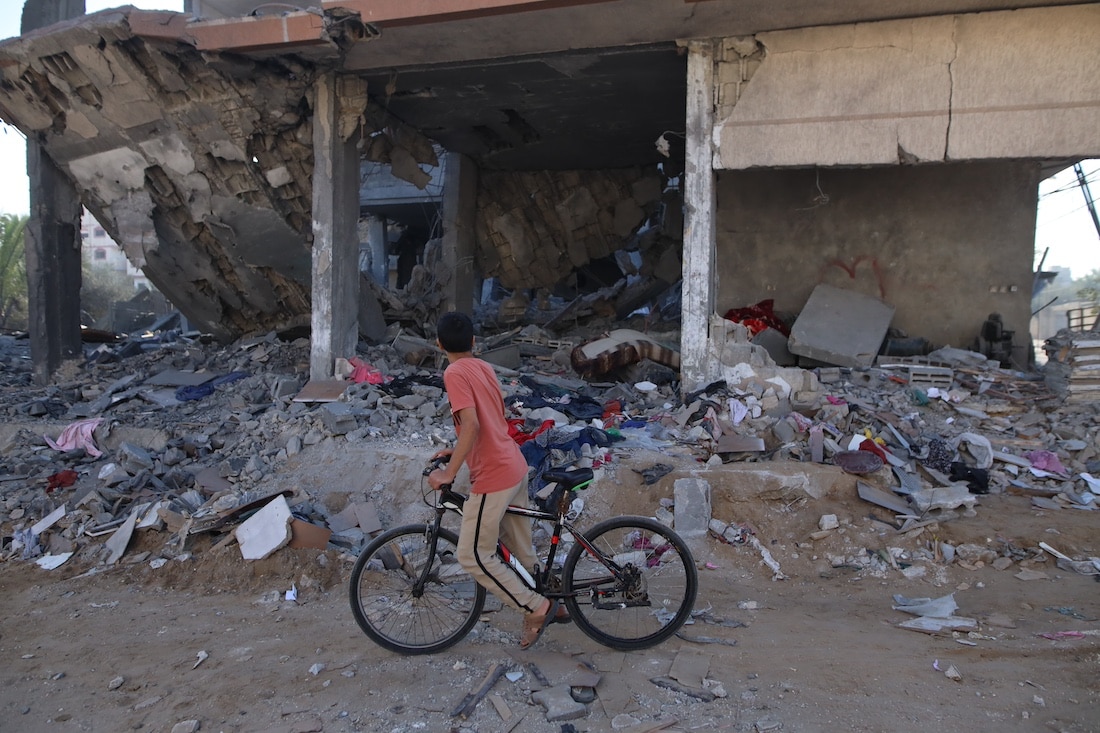
What are the greatest needs inside Gaza?
The aid trucks that have been allowed to enter Gaza have delivered only a fraction of the medicine, medical supplies, fuel, food, and water people need. As of January, Gaza no longer has any fully functional hospitals for its population of more than 2 million. Even in facilities that are currently functional, health workers are operating in impossible conditions, providing trauma care without the anesthesia, blood, medicine, materials, staff, supplies, or space needed to provide proper care to the patients lining the halls. Gaza’s two largest hospital complexes, Al-Shifa and Al-Quds, temporarily suspended operations in November due to these shortages.
These shortages are having a tragic impact on the health of Gaza’s civilians. Project HOPE’s team in Deir al Balah reports that for the week of February 9, 15% of the pregnant women they treated showed signs of malnutrition. At least 50,000 women are pregnant in Gaza, with approximately 5,000 expected to give birth each month. With little to no access to health care, these women will be forced to give birth in shelters, homes, and amidst rubble. An estimated 15% will endure birthing complications with minimal support for medical interventions.
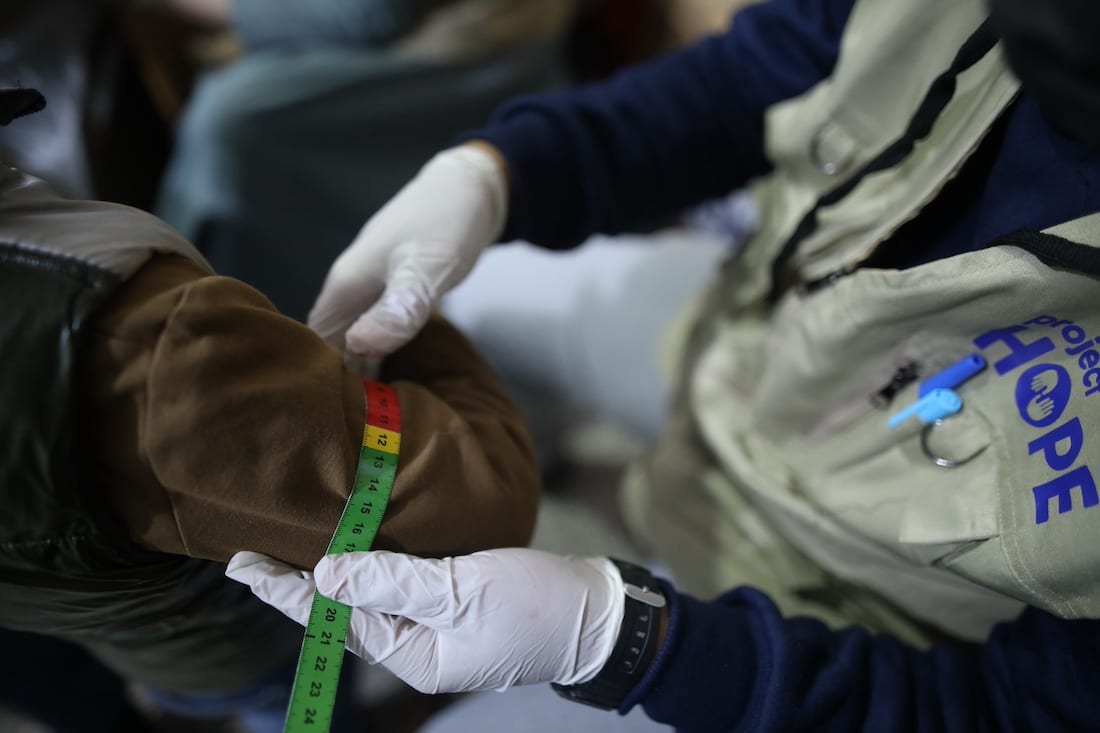
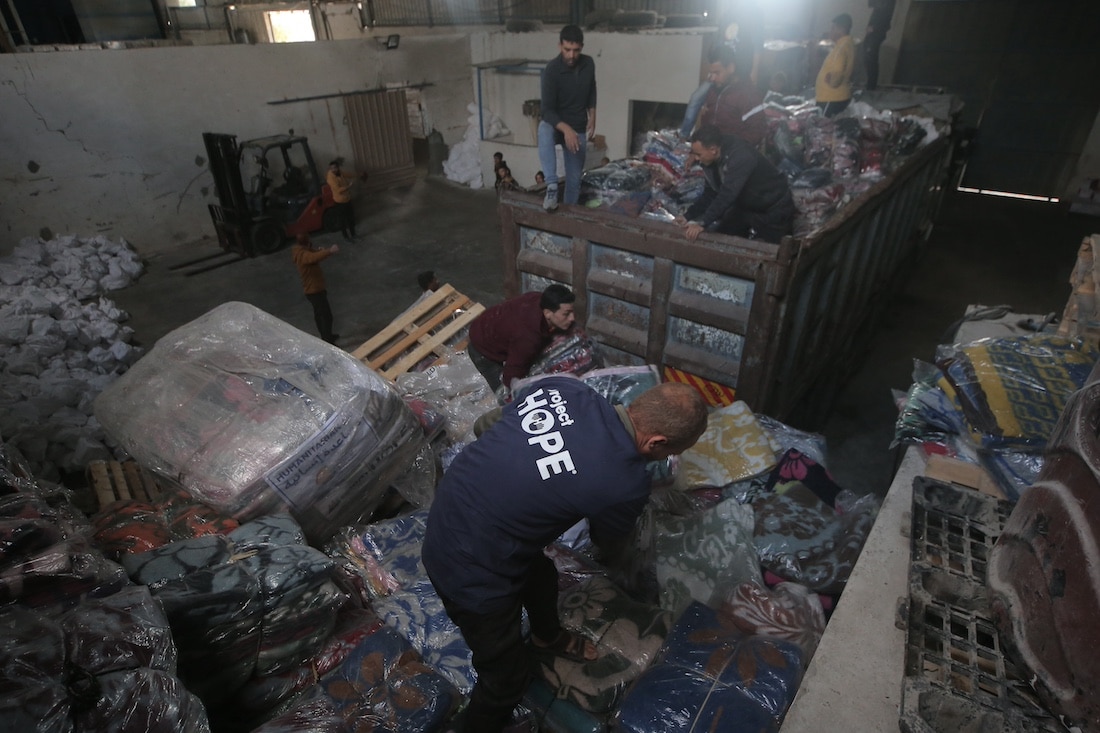
“The health crisis in Gaza is profoundly alarming,” said Dr. Santosh Kumar, Medical Coordinator for Project HOPE in Cairo. “During a recent visit to a school in Rafah that is housing displaced women and children, my colleague witnessed over 70 pregnant women and 39 newborns enduring overcrowded conditions with nearly no access to essential resources such as food, clean water, bathrooms, and proper hygiene facilities. Compounding this dire situation is the perilously slow arrival of aid. Without more efficient processes for delivering aid and a sustained ceasefire, the misery in Gaza will only continue and we will witness more people die every day from relentless violence and preventable causes.”
As people across Gaza have been forcibly relocated time and time again, areas have become overpopulated. In overcrowded and unsanitary areas, there are reports of 700 people using one toilet, dozens of women giving birth each day, and people nursing open wounds. Overcrowding and harsh living conditions have caused an alarming rise in acute respiratory infections, scabies, jaundice, diarrhea, and bloody diarrhea.
>> Read reflections from our program officer on the ground in Gaza
What are health workers facing in Gaza?
Health workers in Gaza are working in horrific conditions. What few hospitals remain functional in Gaza face scarce resources, fuel shortages, and a dangerous lack of medical supplies. There are reports of surgeries being performed without anesthesia, health workers working around the clock, and patients lining the hallways.
“The daily reality for people is unimaginable right now,” said Dr. Santosh. “People are hungry, grieving, and living without water or electricity. People are losing hope of survival as the bombardment has intensified.
“Beyond the immediate threat of violence, harsh living conditions have given rise to a health catastrophe, with an alarming rise in infectious diseases, respiratory issues, skin infections, lice, and diarrhea. With no access to hygiene supplies, assistive devices, or other necessities, tens of thousands of displaced people with disabilities, injuries, and illnesses — including children — continue to suffer in silence.
“The health system is nearing total collapse. The remaining health facilities can barely function with people being treated on the floor of hospitals or two to three patients occupying a single bed. Brave health workers are operating in the dark on patients without any anesthesia or painkillers. Critical medications, such as those for cancer and lifesaving drugs like insulin, are in dangerously short supply.”
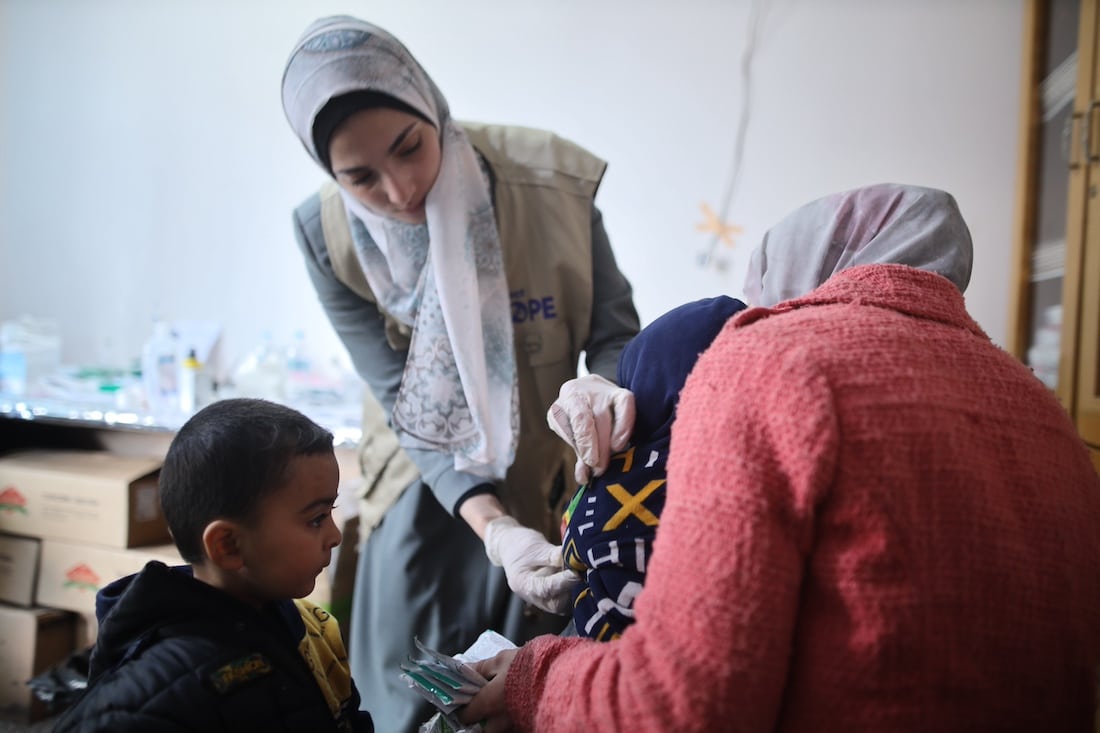
Dr. Monther Abo Sharek, an emergency doctor at El-Najar Hospital in Rafah, told us in October 2023 that the majority of his staff had not left the hospital since the war started. The doctor told us that his hospital had 80 beds to meet the needs of 500,000 people, faced severe shortages of medicines and medical equipment, and was unable to refer trauma cases to larger hospitals. They had no imaging equipment to assess serious internal injuries, and regular electricity blackouts rendered their existing equipment unusable.
“Most of these cases are critical,” Dr. Sharek said. “Most of them will die soon because we don’t have enough medical supplements or medical staff to deal with them.”
Further, Dr. Sharek reported that his staff were facing severe mental health issues due to exhaustion and trauma brought on by the severity of civilian injuries they were treating. “Our team is very exhausted,” he said. “Our team is very tired, emotionally, inside them. Nobody in this world can imagine the number of cases and the type of victims that have come to us.”
“The scene is very hard to imagine. Most of us now need psychological therapy, because we’re just carrying more than we can carry,” he said.
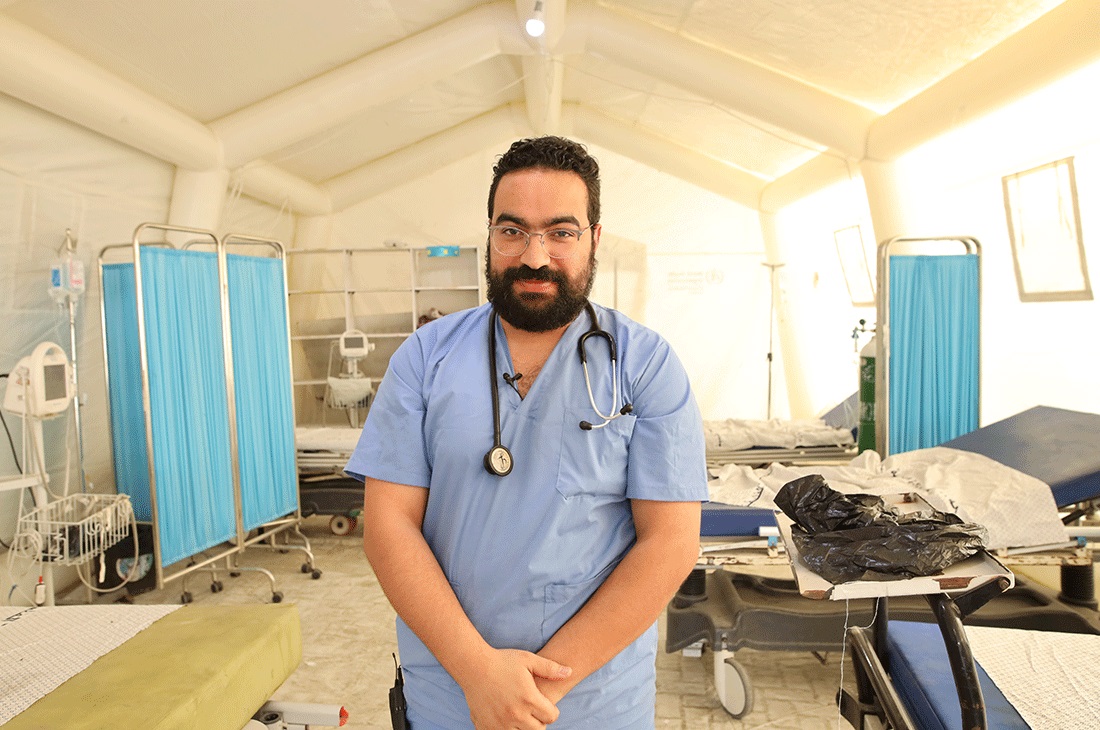
“The scene is very hard to imagine. Most of us now need psychological therapy, because we’re just carrying more than we can carry.”
Does Project HOPE work in Gaza?
Project HOPE previously supported relief efforts in Gaza through local partners in 2009 and 2021, including distributions of hygiene kits, emergency medicines, medical supplies, and equipment.
Though Project HOPE did not have active operations in Gaza prior to the current conflict, our medical team on the ground is comprised of local Palestinians from Gaza. Throughout our response, we have worked with local authorities, UN agencies, and local civil society to plan and coordinate the delivery of aid. Additionally, we are in regular, close contact with partners across the region and are actively participating in the World Health Organization (WHO)’s Global Health Cluster to better coordinate our response.





